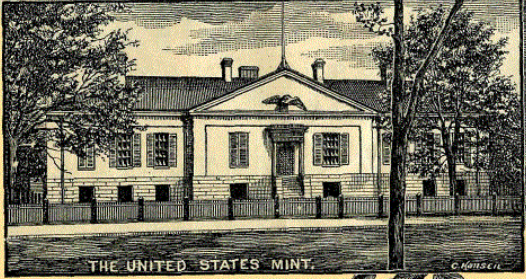Banks and the Mint [1]
This information was first published in 1888:
BANKING FACILITIES.
CHARLOTTE has the best banking facilities of any place in North Carolina. There are three solid and successful banks in the town; the First National, with resouces at the time of the last report of $969,571.61; the Commercial National, with resources of $706,082.93, and the Merchants' and Farmers' National, with resources of $643,840.92. There are also three Building and Loan Associations in the city, each one in a flourishing condition, and each one daily aiding in the upbuilding of the city. Over two hundred houses have been built in Charlotte through the medium of the Building and Loan Associations.
THE UNITED STATES MINT BUILDING.
IN former days Charlotte boasted of a United States Mint [2], where gold and silver money were coined. The building is still here, and though not now used as a mint, it is put to an equally good purpose, and one that is of vastly more service to the mining interests of the South; and that is, an assay office, where the bullion from the surrounding mines is received, assayed and purchased for the government. The mint building is a massive, solid looking structure, and is located on East Trade street, near the Richmond & Danville Railroad station. It is provided with vaults of the most substantial kind, that were once used for the storage of gold and silver coin.
The mint was established in Charlotte in the year 1838, and was continued until 1861, when the outbreak of the war caused a suspension of operations. During the period named, money to the value of $5,059,188 was coined in Charlotte, of which $4,405,135 was in half eagles, $544,915 in quarter eagles and 109,138 in gold dollars.
After the close of the war the mint building was reopened as an assay office for the benefit of the mining interests of the South. Business lagged for a considerable period, as only a few mines were in operation. Gradually, however, as the effects of the war wore off, business in the mining circles began to improve, and about 1873 the assay office began to have some work to do. Since that date there has been a steady increase in the business of the assay office; and in the language of the director of the mint, the assay office here is "now fulfilling the purpose for which it was established, to provide the necessary facilities to a mining region in relation to which it occupies a central position." Some idea of the business of the assay office may be obtained from the fact that the books show that since the year 1876, the assays of gold bullion have amounted to $1,800,000.
It must be remembered, in connection with the statement of the amount of bullion assayed, that some of the largest mines in this section are owned by English capitalists, who ship their bullion direct to England, and their gold does not pass through the assay office here. Robert P. Waring is the assayer, and Geo. B. Hanna the assistant assayer. Mr. Waring was appointed by President Cleveland.

Sketches of Charlotte, the Queen City of the Old North State and Mecklenburg, the Banner County. Charlotte, NC: Charlotte Chamber of Commerce, 1888.